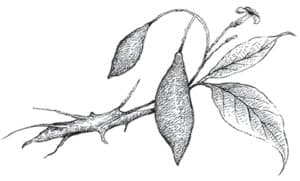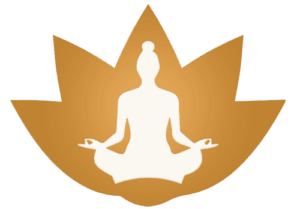Iboga and Pygmy Spirituality
The use of iboga, the primary plant source of ibogaine, goes back beyond recorded history. Varying accounts claim that the pygmy use stretches well beyond the rise of what we generally considered the rise of civilized society. This use, by inland forest dwelling pygmy populations is difficult to track and difficult to interpret because it comes from a worldview with a very different relationship to time and the rest of human culture.
The intersections between this pygmy worldview began with the introduction of iboga to the coastal dwelling Bantu populations. The bantu represent one of the first major migrations throughout Africa. In Gabon, the Bantu lived and fished along the coast, occasionally trading inland. With the arrival of French colonial influence came a pressure to extend these inland trade routes. Some villages were later uprooted completed, forcing the Bantu populations inland, which put them in contact with the pygmy communities and their initiatory use of iboga.
Bwiti
Out of this intersection, Bwiti and other similar spiritual practices were born, and have developed since. Bwiti is now widely practiced in Gabon, and an integral part of Gabonese culture and identity, despite other religious influences in the country, particularly in urban settings.
The term iboga literally means, “to care for” or “to heal.” The Bwiti, who see the use of large doses of iboga as an initiatory rite, say that the vision of Bwiti is ultimately a secret because it involves the ingestion of such large doses of iboga. Bwiti practitioners say that it makes it possible for them to communicate with the spirits of the forest, and there are many ritual elements that represent and nurture this connection that are each considered integral to the use of iboga.
We Are Committed to Sustainability & Reciprocity
History of Ibogaine Timeline
Early Scientific Interest
1864
The first published description of iboga root appears in France and is given the taxonomical name Tabernanthe iboga.
1885
The first published description of the ceremonial use of iboga.
1901
Ibogaine is first isolated and crystalized from T. iboga root bark.
1901-1905
The first pharmacodynamic studies of ibogaine are performed.

Early Medical Use & Research
1901-1905
During this period ibogaine is recommended as a treatment for “asthenia” at a dosage range of 10 to 30 mg per day.
1939-1970
Ibogaine is sold in France as Lambarene, a “neuromuscular stimulant,” in 8 mg tablets, recommended for indications that include fatigue, depression, and recovery from infectious disease.
1955
Harris Isbell administers doses of ibogaine of up to 300 mg to eight already detoxified morphine addicts at the U.S. Addiction Research Center in Lexington, Kentucky.
1957
The description of the definitive chemical structure of ibogaine is published. The total synthesis of ibogaine is reported in 1965.
Ibogaine as an Addiction Interrupter
1962
Howard Lotsof, a teen drug user from the Bronx, inadvertently discovers the unique anti-addictive properties of the psychedelic ibogaine, an indole alkaloid derived from the bark of the root of a Central West African shrub, iboga. He notices after a several-hour trip that though he has not used any heroin, he has no withdrawal symptoms.
1962-1963
Howard Lotsof administers ibogaine to 1-9 individuals at dosages of 6 to 19 mg/kg, including 7 with opioid dependence who note an apparent effect on acute withdrawal symptomatology.
1967-1970
The World Health Assembly classifies ibogaine with hallucinogens and stimulants as a “substance likely to cause dependency or endanger human health.” The U.S. Food and Drug Administration (FDA) assigns ibogaine Schedule I classification. The International Olympic Committee bans ibogaine as a potential doping agent. Sales of Lambarene cease in France.
1969
Dr Claudio Naranjo, a psychiatrist, receives a French patent for the psychotherapeutic use of ibogaine at a dosage of 4 to 5 mg/kg.
First Push for Clinical Trials
1985
Howard Lotsof receives a U.S. patent for the use of ibogaine in opiate withdrawal. Additional patents follow for indications of dependence on cocaine and other stimulants, alcohol, nicotine, and polysubstance abuse.
1988-1994
U.S. and Dutch researchers publish initial findings suggestive of the efficacy of ibogaine in animal models of addiction, including diminished opioid self-administration and withdrawal, as well as diminished cocaine self-administration.
1989-1993
During this period, treatments are conducted outside of conventional medical settings in the Netherlands involving the International Coalition of Addict Self-Help (ICASH), Dutch Addict Self Help (DASH), and NDA International.
1991
Based on case reports and preclinical evidence suggesting possible efficacy, NIDA Medication Development Division (MDD) begins its ibogaine project. The major objectives of the ibogaine project are preclinical toxicological evaluation and development of a human protocol.
Aug. 1993
FDA Advisory Panel meeting, chaired by Medical Review Officer Curtis Wright, is held to formally consider Investigational New Drug Application filed by Dr. Deborah Mash, Professor of Neurology at the University of Miami School of Medicine. Approval is given for human trials. The approved Ibogaine dosage levels are 1, 2, and 5 mg/kg. The Phase I dose escalation study begins December 1993, but activity is eventually suspended due to lack of funds.
Oct. 1993-Dec. 1994
The National Institute on Drug Abuse (NIDA) holds a total of four Phase I/II protocol development meetings, which include outside consultants. The resulting draft protocol calls for the single administration or fixed dosages of ibogaine of 150 and 300 mg versus placebo for the indication of cocaine dependence.
Mar. 1995
NIDA Ibogaine Review Meeting is held in Rockville, Maryland, chaired by the MDD Deputy Director, Dr. Frank Vocci. The possibility of NIDA funding a human trial of the efficacy of ibogaine is considered. Opinions of representatives of the pharmaceutical industry are mostly critical, and are a significant influence in the decision not to fund the trial. NIDA ends its ibogaine project but it does continue to support some preclinical research on iboga alkaloids.
1988-1994
U.S. and Dutch researchers publish initial findings suggestive of the efficacy of ibogaine in animal models of addiction, including diminished opioid self-administration and withdrawal, as well as diminished cocaine self-administration.
The Ibogaine Medical Subculture
Mid 1990’s-2001
Ibogaine becomes increasingly available in alternative settings, in view of the lack of approval in the Europe and the United States. Treatments in settings based on a conventional medical model are conducted in Panama in 1994 and 1995 and in St. Kitts from 1996 to the present. Informal scenes begin in the United States, Slovenia, Britain, the Netherlands, and the Czech Republic. The Ibogaine Mailing List begins in 1997 and heralds an increasing utilization of the Internet within the ibogaine medical subculture.
2009
The first official gathering of the Global Ibogaine Therapy Alliance (GITA) takes place in Sayulita, Mexico.
Sep. 2015
GITA publishes the Clinical Guidelines for Ibogaine-Assisted Detoxification as a risk-management guideline, which forms the basis of Anzelmo’s treatment protocol.
Ibogaine Detox with World Class Medical Support
Our Greatest Contribution
Ibogaine is an unprecedented and unique medicine for the treatment of opioid withdrawal and addiction. At Anzelmo we are first and foremost dedicated to providing the best treatment service available, respecting the natural origins of iboga and the historical significance of ibogaine treatment without making the same mistakes that have been made throughout the treatment industry.
We know that ibogaine treatment works, and the greatest validation that we can receive, and the most significant contribution that we can offer, is to the comfort and personal freedom of each and every person that comes through our program.


